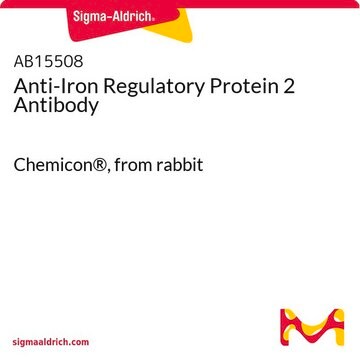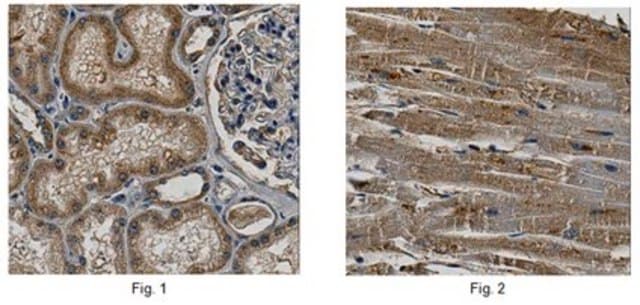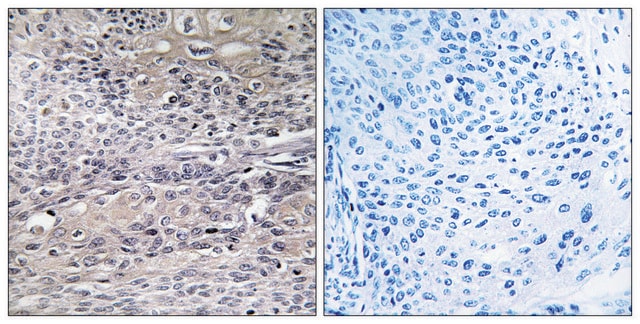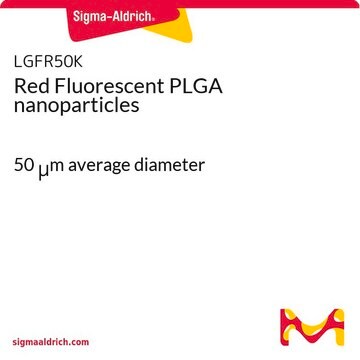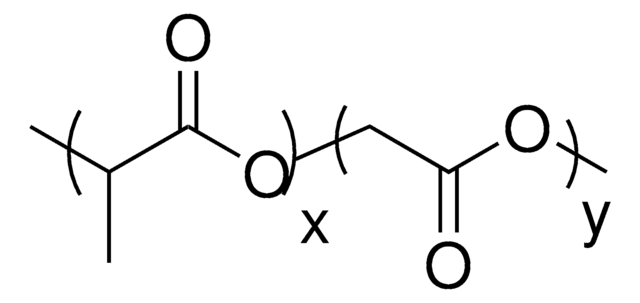MABS2030
Anti-IRP2 Antibody, clone 3B11
clone 3B11, from mouse
Sinónimos:
Iron-responsive element-binding protein 2, IRE-BP 2, Iron regulatory protein 2
About This Item
Productos recomendados
origen biológico
mouse
forma del anticuerpo
purified immunoglobulin
tipo de anticuerpo
primary antibodies
clon
3B11, monoclonal
reactividad de especies
mouse, human
envase
antibody small pack of 25 μg
técnicas
immunohistochemistry: suitable (paraffin)
immunoprecipitation (IP): suitable
western blot: suitable
isotipo
IgGκ
Nº de acceso NCBI
Nº de acceso UniProt
modificación del objetivo postraduccional
unmodified
Información sobre el gen
human ... IREB2(3658)
Descripción general
Especificidad
Inmunógeno
Aplicación
Western Blotting Analysis: A representative lot detected IRP2 in Western Blotting applications (Yoshinaga, M., et. al. (2017). Cell Rep. 19(8):1614-1630).
Signaling
Calidad
Immunohistochemistry (Paraffin) Analysis: A 1:50 dilution of this antibody detected IRP2 in human kidney tissue sections.
Descripción de destino
Forma física
Almacenamiento y estabilidad
Otras notas
Cláusula de descargo de responsabilidad
¿No encuentra el producto adecuado?
Pruebe nuestro Herramienta de selección de productos.
Certificados de análisis (COA)
Busque Certificados de análisis (COA) introduciendo el número de lote del producto. Los números de lote se encuentran en la etiqueta del producto después de las palabras «Lot» o «Batch»
¿Ya tiene este producto?
Encuentre la documentación para los productos que ha comprado recientemente en la Biblioteca de documentos.
Nuestro equipo de científicos tiene experiencia en todas las áreas de investigación: Ciencias de la vida, Ciencia de los materiales, Síntesis química, Cromatografía, Analítica y muchas otras.
Póngase en contacto con el Servicio técnico